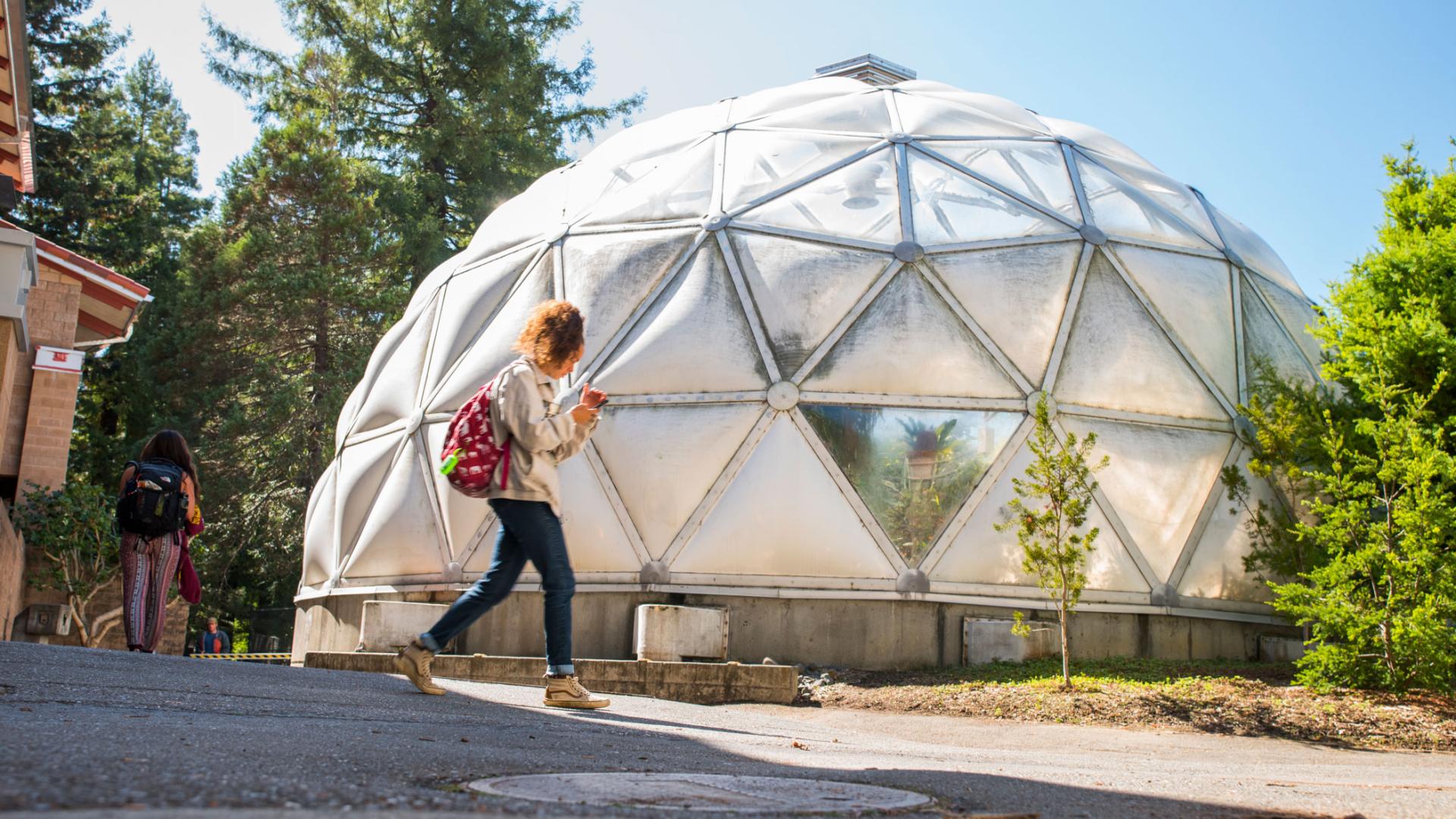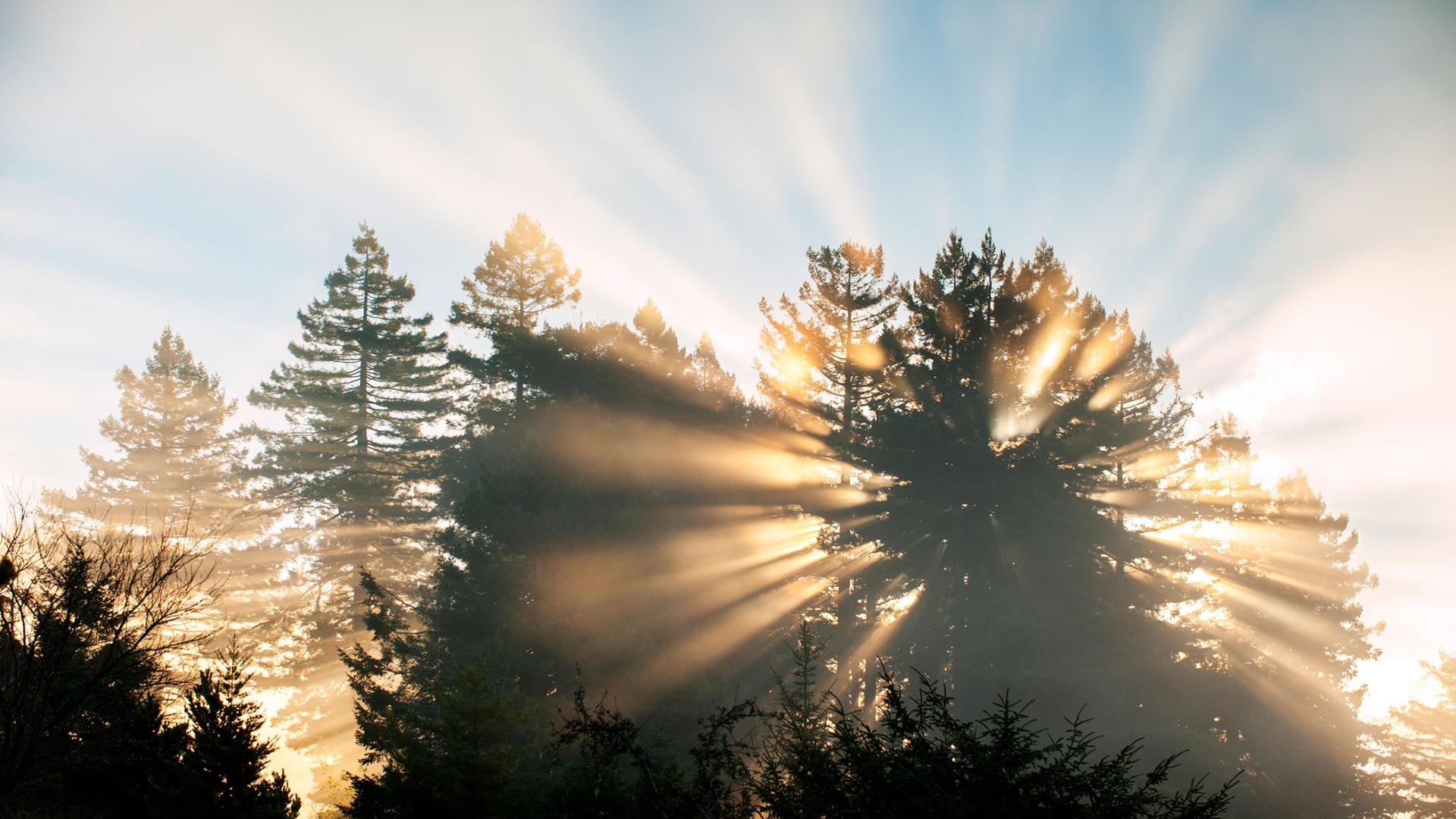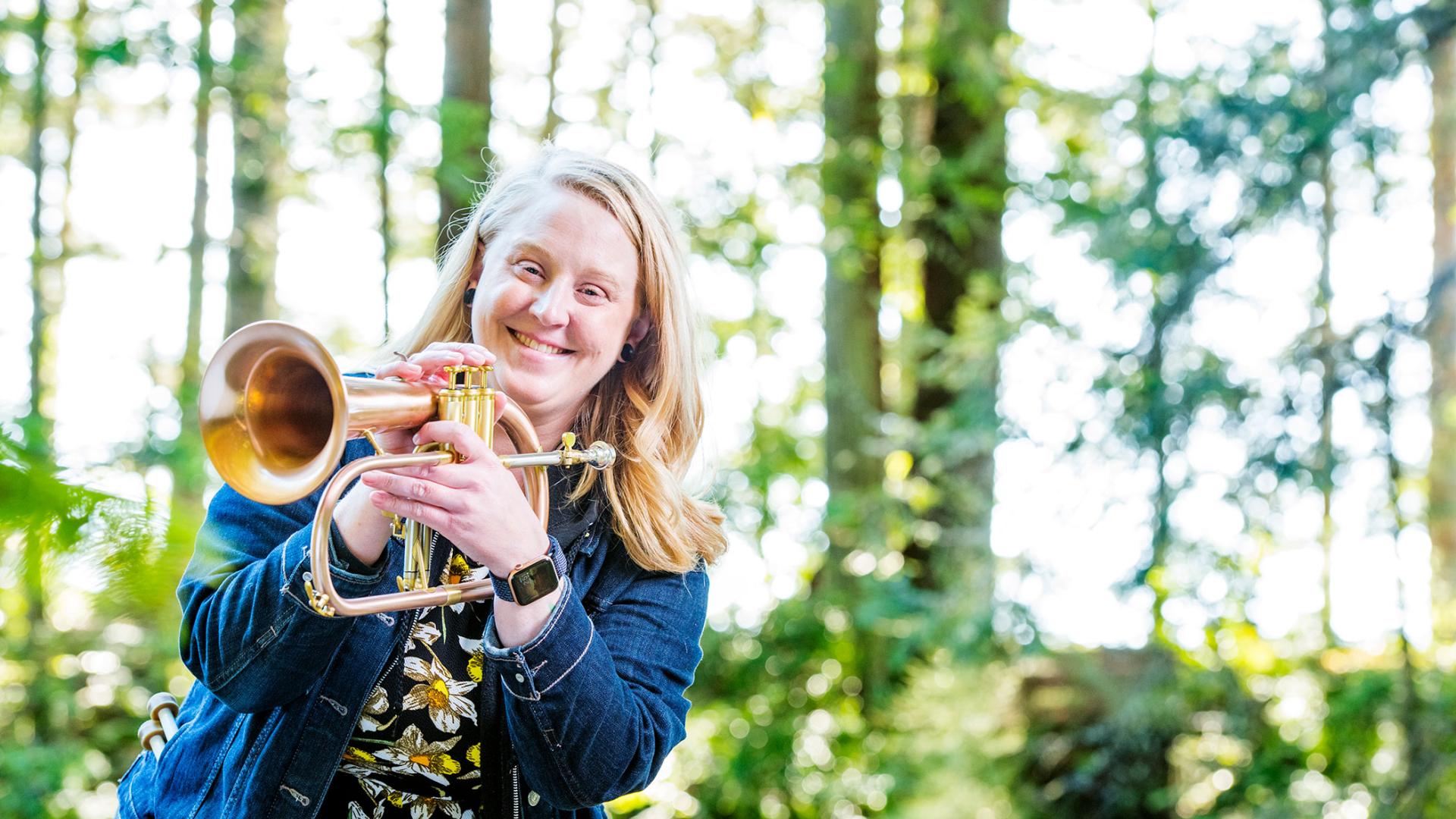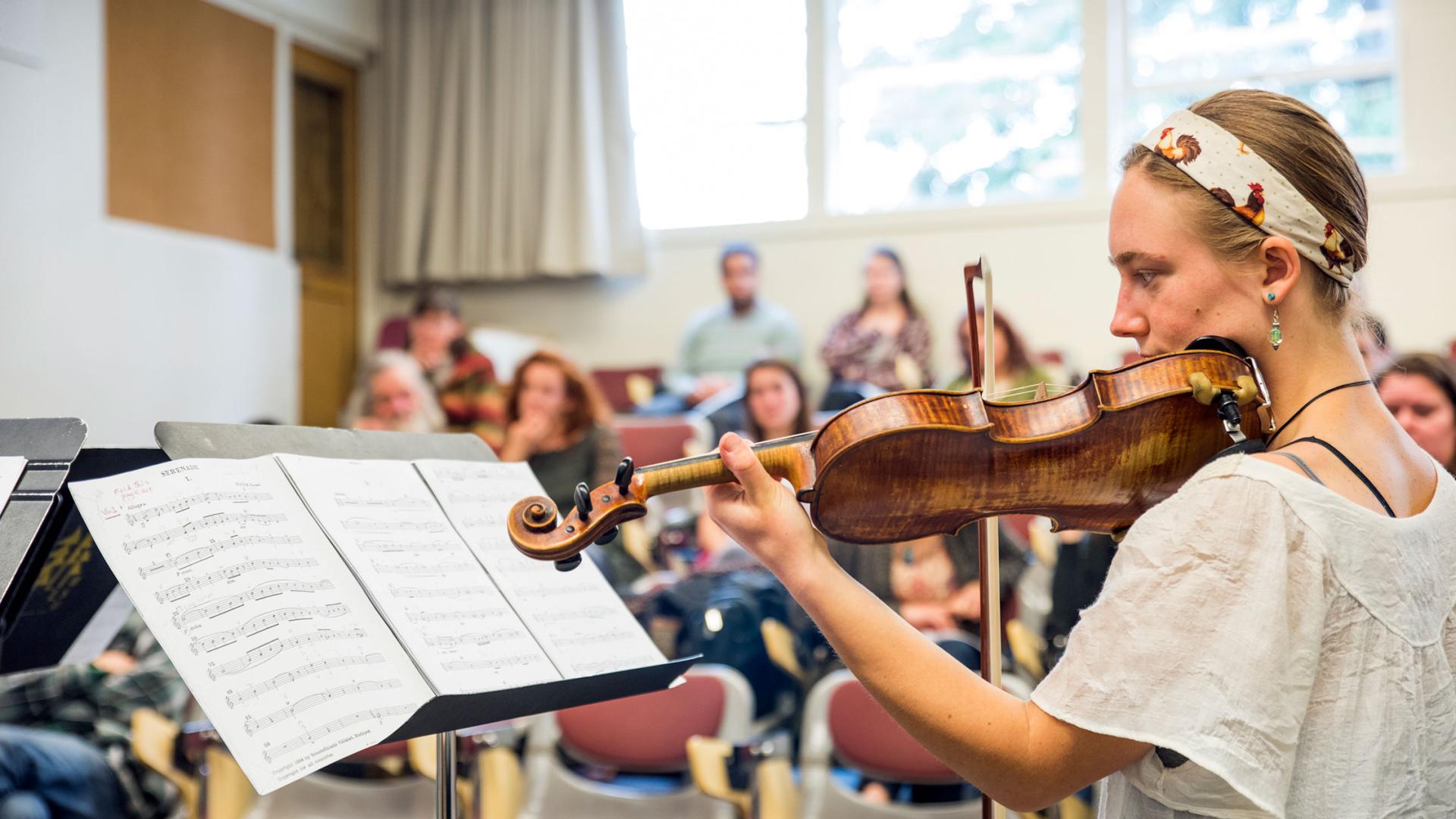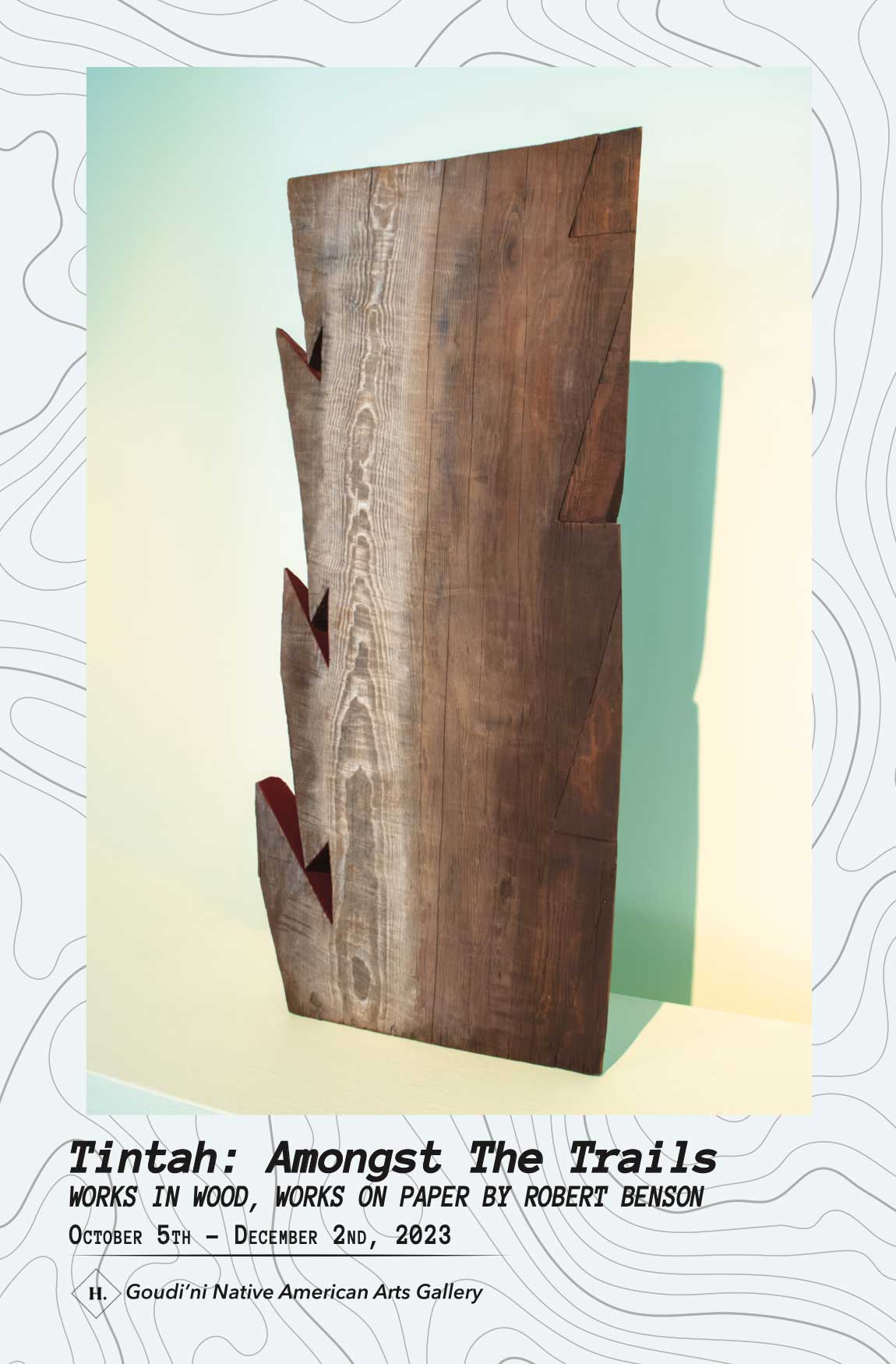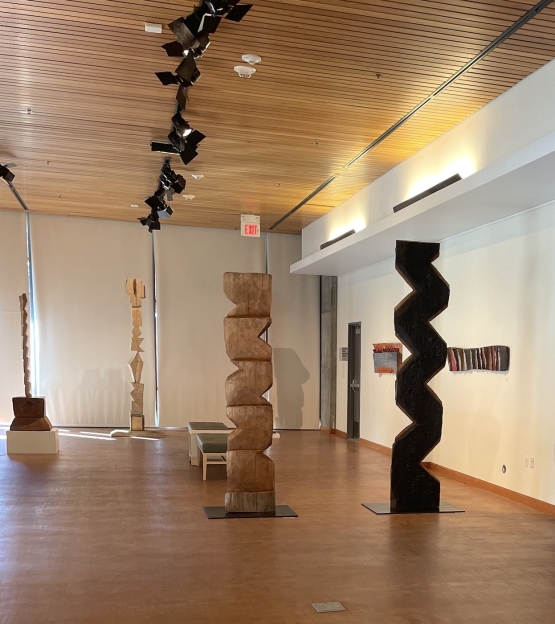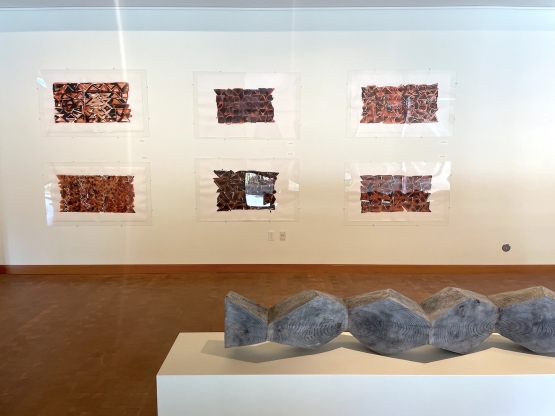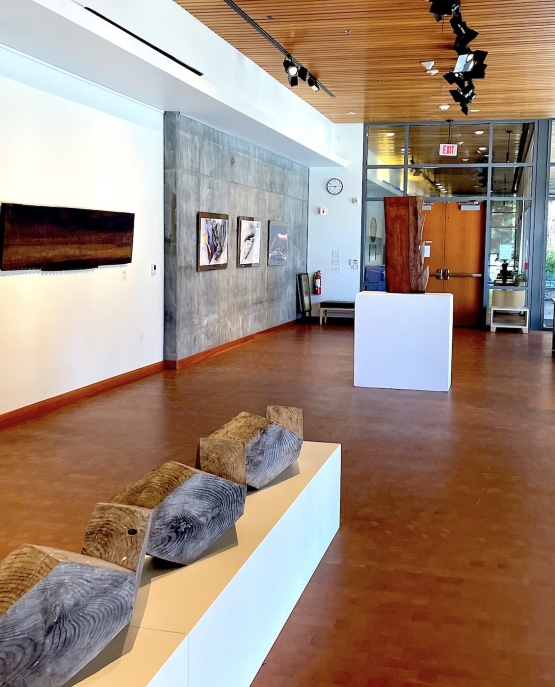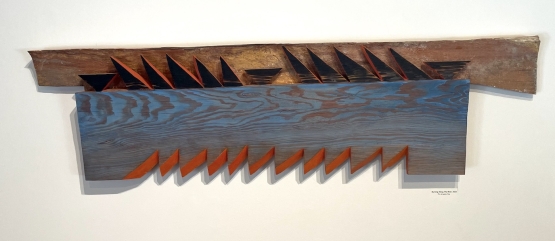Humboldt State University Third Street Gallery presents, Transportraits, a traveling solo exhibition of photographic portraits of transgender men by Lorenzo Triburgo. The exhibition runs from January 31 through March 5.
Lorenzo Triburgo resides in New York where he makes his art and also works as an online instructor of Gender and Sexuality Studies and Art at Oregon State University.
Having come out as transgender at age 28, Triburgo wanted to share his experiences through a project, which would address his trans genderqueer experience. His goal is to create “positive representations of trans existence in a cultural climate lacking these affirmations.”
Triburgo states that, ”I set out to allow the fabrication of the Natural to emerge for itself. I followed instructions from Bob Ross’ The Joy of Painting to create my first oil paintings, each of which would serve as a backdrop for a portrait. The resulting project, Transportraits, employs these constructed representations of nature and the language of photographic portraiture (along with all its rhetorical baggage) to poke a hole in the balloon of “truth.” While the painted backdrops in each photograph serve to underscore the artifice that our culture unconsciously embraces in its understanding of the natural world, so too, do Triburgo’s sitters subvert normative constructs of masculinity, exposing them to be equally artificial fabrications.
These portraits offer a vision where the trans experience is not hyperbolized by focusing on the evolution of the body. Instead, as Eliza Steinbock, in writing about Triburgo’s work, they are, “about an artwork that brings the viewer closer in to imagine a different trans reality.” As opposed to objectification, Triburgo presents the confidence and humanity of his sitters.
Lorenzo Triburgo’s Transportaits is produced by Humboldt State students. Students enrolled in the Art Museum and Gallery Practices Program participate in the daily management and planning of shows at the gallery. The gallery provides real-life opportunities for the students to develop their gallery and museum skills, which in turn provides them with experience that will help them to enter the job market. Many students who have participated in the program have gone on to careers in museums and galleries throughout the nation.
Artist Talk and Reception
Lorenzo Triburgo will present an artist talk about his work at Humboldt State University on Thursday, February 2 starting at 5 p.m. The presentation will be held in Room 102 in the Art Department Building on the Humboldt State University campus. This event is free to the public and the campus community.
A reception for the artist will be held at HSU Third Street Gallery on Saturday, February 4 from 6:00 p.m. to 9:00 p.m. during Eureka’s monthly Arts Alive program. The exhibition will run from January 31 through March 5. The gallery is open Tuesdays through Sundays from noon to 5 p.m. and is closed on Mondays. Humboldt State University Third Street Gallery is located at 416 Third Street Eureka, California. The gallery was recently relocated and renamed after 19 years in its former location on First Street in Eureka. For more information, call (707) 443-6363
I began making photographs when I was eleven. I was captivated by the idea of creating a situation that was close to the truth, and documented as truth through the camera, but that was an extension of my imagination. In my teen years, I recognized that the camera’s ability to construct alternate truths (if in the right hands) could lend itself rather nicely to cultural criticism. In fact, I realized that photography was the perfect medium for addressing the falsities I witnessed all around me.
Playing with the language of photography in the service of gender transgression has been a rich source of inquiry and joy in my creative life. I find an interesting relationship exists between photographic truth and biological determinism and I attempt to exploit that relationship in my images.
In 2008, when I was 28, I came out as transgender. I knew I wanted to create a project that addressed my trans, genderqueer experience, and that at the forefront of the project needed to be the fallacy of a fixed gender identity, affixed to the biological. Feminists work tirelessly to reveal the misconception of the perceived connection between “the body” and the “gender.” I am convinced that documenting my own physical changes (or any trans bodies) would serve only to solidify this imagined relationship.
I set out to allow the fabrication of the Natural to emerge for itself. I followed instructions from Bob Ross’ The Joy of Painting to create my first oil paintings, each of which would serve as a backdrop for a portrait. The resulting project, Transportraits, employs these constructed representations of nature and the language of photographic portraiture (along with all its rhetorical baggage) to poke a hole in the balloon of “truth.”
My sincerest gratitude extends to all the people who graciously gave their time to sit for a portrait and courageously lend their likeness to this project.
Although trans existence is not safe and it is not easy (although, make no mistake, it is filled with its own joys and delights), the people who are presented in these portraits made a decision to be out. It is because of this willingness that Transportraits can contribute positive representations of trans existence in a cultural climate lacking these affirmations.
I have received letters and messages from trans people around the world in appreciation of these photographs and it is for these people for whom I continue my life as an artist.
Lorenzo Triburgo
February 2017
---
Hark! Here are Heroes:
The Serious Silliness of Lorenzo Triburgo’s Transportraits
by Eliza Steinbock
Photographed faces of masculine stature greet the viewer, proudly standing out against the soft palette of painted natural scenes. American artist Lorenzo Triburgo’s series titled Transportraits ask for a double take, precisely the gesture of an inside joke delivered with a smile and wink.1 To experience the breadth of the series is to reach an “aha!” moment: the portraits concern representing heroism more than the individual story. The more one looks, the more contrasts emerge: the painted and the photographed, the referenced and the indexical, the silly and the serious, oscillating across the threshold of an affected landscape and a sincere posture. Who is this real person in the fake surrounding?
The title informs the viewer that these people presenting themselves proudly are trans, and from their appearance and stance they present as an array of trans masculinities. Shot from slightly below the subject, the camera leaves no choice other than to admire the sitter. Each person was instructed to imagine themselves gazing out at a sea of people: Triburgo wanted them to feel bigger and better than anyone else. The pose is recuperative, to locate the laudatory in the place of recrimination, if not criminalization. Transgender figures of all stripes and gender ambiguous forms such as androgyny typically follow one of two representational stereotypes in the visual arts: sexualized bodies such as the Sleeping Hermaphroditus (artist and year unknown, after 155 BC), or adhering to the trope of before-and-after transition imagery. Most portraits of trans* and gender variant people before the twentieth century were taken to medically classify pathology, for research on eugenics and as police mug shots. Not only are Triburgo’s subject’s fully clothed, but in gazing out beyond the frame and dominating the viewer’s position they also refuse us access to their bodies and to capitulate to our investigating gaze.
However, rather than documenting, and dignifying, exceptional trans men, the portraits are firstly titled after Robert Norman “Bob” Ross’ instructional landscape paintings, which Triburgo recreated based on Joy of Painting episodes from PBS (1983-1994). There is no aura, as Walter Benjamin would say. “Valley Waterfall (Erin)” [Plate No. 1] sits next to “Evening Seascape (Trent)” [Plate No. 17], alongside “An Arctic Winter Day (Jose)” [Plate No. 20].
--
Shifting across different climates and ecosystems, the scenes lend compositional qualities of various mood, color, and tones. The scenes were matched by the artist to resonate with the sitter’s garb, eyes and hair, to amplify their attitude. They do not reveal further personal insights into the sitter, such as where they are from; instead, the lurid skies and kitsch trees evoke a humorous levity that seems to further raise the sitter above the viewer. Hovering in the background, slightly out of focus, is the question of authenticity. These are generic scenes. These are also everyday people. Created over four years, Triburgo took his time to elaborate the series into thirty total portraits (twenty are on display) because he wanted sitters to approach him who were committed to lending their face to the name of trans. Unlike Katie Herzog’s grey-scale paintings in Transtextuality (Senate Bill 48) that depicts 48 portraits of esteemed trans men and women of letters, Transportraits is full of lively colors that reject a staid or somber approach to redressing the void of positive trans (masculine) representation.2 Thus, the photograph cantilevers from the silly tilt of a Bob Ross scene to the serious lilt of the sitter’s expression. The viewer is required to be the fulcrum across which the connotations seesaw.
The series also presents generic representational conventions, and their expectations, in a game of compare and contrast. The nineteenth century representational practices of aristocratic portraiture are set in alignment to the colonial discovery of the American landscape. The American tradition of society portraiture embodied by John Singer Sargent is recalled in the thrust of sure chins, yet these sitters are not bedecked in finery. The romanticism of the Hudson River School and Northwestern painters like Alfred Jacob Miller both influenced Ross’ wet-on-wet technique that builds intricate wisps of cloud, reflecting pools, brush and fauna. When figures appear in these turn-of-the-century landscapes at the edge of a waterline or along a ridge they are anonymous settlers or native folk. The uneasy relation between the white supremacist, heteronormative settler culture of then and the twenty-first century beholder invokes what I hear as the slightly corny imperative, to hark! Listen, this is not your usual manifest destiny image, the foliage peeled back for you to take in the serenity of the seemingly untouched land. Hark is also a hunting call to attention, used in reference to ‘harkening back’ when the hounds retrace the trail to find the scent again. The Transportraits series asks, “What was that toxic masculinity, can you still smell it?” Underlying the jest is an altogether serious quest to point to the cracks in the construction of American masculinity, interrogate the damage of its caricature-like qualities. The staging intimates that just as the ‘natural world’ is a fabrication so is ‘human nature’ a rich fantasy.
So, on the one hand the sitters gaze off to a lofty place, appearing majestic, transcendent even. Despite the potentially hyper-realistic medium of photography, we are presented with idealistic versions of a self. Yet, Transportraitsrecasts the art historical foundation of how it is to appear as a man, specifically the cannon of American romanticism of the rugged, virile conqueror of Nature including the natives. The oeuvre of Kent Monkman’s large-scale paintings in pastels and zippy bright colors launches a similar campy critique of toxic settler masculinity, but from the point of view of a two-spirit Native transfemininity.3 He appears in his paintings as Miss Chief Eagle Testicle (pronounced mischief egotistical) wearing red thigh-high boots, a thong-like loincloth (or not), and headdress. Miss Chief’s character enacts homoerotic scenes with white cowboys, fur traders, military men and the like. “History is Painted by the Victors” (2013), for example, rewrites the encounters between ‘men’ in frontier country borrowing colonial aesthetics and bending them to decolonializing tasks.
The decolonizing aesthetics within Triburgo’s series pounce on the fallacy of portraiture that purports to present the essence of the subject. For trans subjects this revealing gesture means that one’s gender presentation is judged as a true or false representation of one’s “essence.” The genre of portraiture invites the viewer to attribute gender identity (along with race, class and other social categories) and thereby makes assumptions about the matching (or not) morphology of the body underneath clothes. It plays into what I have called elsewhere the trick of “visual essentialism”: banking on the essentialism of the mimetic image appears to carry over into the essentialism of the identity represented therein. The political wish to represent marginalized identities can lead to a conflation of political visibility with actual visible representation.4 It does take heroic effort to combat visual essentialism from within portrait photography, but Triburgo has the additional challenge to avoid that his sitters are not faced with the violence of gender essentialism that would foreclose trans identities. The heroic portrait therefore nods to the daily running of the gender essentialism gauntlet, while also calling attention to the prejudice that results in uneven life chances for trans people.5 As metaphorical portraits, they refuse to give it straight, or cop to the assumptions of portraiture invested in the fullness of the subject distilled and amplified by the artist.6 This is not about respectful distanciation towards brave individuals then, but about an artwork that brings the viewer closer in to imagine a different trans reality.
At the risk of recapitulating the history of gender variance being akin to the mad or the nonsensical silly, the series asks the viewer to hold in sight two visions at once: the negative and the positive. Much like the optical illusion drawing that invites perception to register a duck and then a rabbit, then the “aha!” it is a duck and a rabbit, Transportraits shows us men who are at once trans, photographic portraits that are at once earnest and flip. The recent work of Math Bass also contains these elements of queer formalism in painted pictograms that play on now you see it, now you don’t.7 Newz! (2014), for example, presents images that can be seen in multiple ways; in an interview, Bass explains that “People have anxiety about ambiguity,” which is why she displaces gender ambiguity onto form.8 From one angle, then, we are greeted with “counter-politics of the silly object,” in Lauren Berlant’s phrasing, a kind of plaything for the viewer that in this case is also prickly and protected.9 Carefully conceived and finely executed, Triburgo’s series still panders to low art, or the popularized art of paint-by-numbers and taking a selfie. Judith (Jack) Halberstam finds great potential in engaging silly objects for cultural analysis in that with the frivolous come alternative claims not possible to make with high art objects.10 Like, Danielle Hendersen’s “Feminist Ryan Gosling” meme that reads “Hey girl. Just thinking about Chandra Mohanty’s theory that Western feminism problematically constructs the Third World woman as the pejorative ‘other’ and the colonial habits that keep women oppressed,” that “yokes the serious to the silly, the obscure and the corny, the dense with the glib,” the portrait series amounts to more than just a negative plus a positive.11 Like transgender studies more broadly, according to Susan Stryker, it enables “a critique of the conditions that cause transgender phenomena to stand out in the first place, and that allow gender normativity to disappear into the unanalyzed, ambient background.”12 In other words, transgender phenomenon emerges when the foreground flips into the background, signaled in Transportraits when the painting title challenges the precedence of the named sitter—why shouldn’t we critically consider the supposed gender normativity of Ross, or of the Romantics, or colonial masculinity? Trans gives the cover to do so, to shift the analytical lens to what only appears to be the ambient drone of normativity.
Though created in the first years of openly transitioning, Triburgo’s first major trans themed series resists the public declarations that mark many trans visual artist’s repertoire. The work is attentive to the political ramifications of taking a confessional tone or working within diaristic or narrative representational forms, to the extent that he comes to refuse ultimately to represent trans and queer subjects in his latest project. This results in a decisive break in the correlation of the morphological body with gender identity. The following project Policing Gender (2014-ongoing) turns away from the outside world to capture an interior space filled with folds of rich fabric gently hanging from an invisible source. The series titles each piece like Policing Gender (for May) to name an incarcerated trans and/or queer person, visually presented in their absence. Though clearly related to the art historical tradition of depicting femininity through sensuous folds (from Caravaggio to Catherine Opie), the emphasis on a unique textile for each portrayal also references Judy Chicago’s Dinner Party (1974-1979) place settings. Along with the thirty-nine women represented in Chicago’s famous installation with a special one-off plate, a personalized fabric runner reminds us to question who is missing from our visual and social histories. If we were able to speak with them here, communing at the table, what would they have to tell us?13
I have resisted speaking directly about individual portraits because the coming together of the series around people willing to give face and give the lie to stereotypes about trans men confounds the desire to individualize and exceptionalize each person. The medium format film Triburgo uses renders each bust in sparkling detail, yet the final prints in smaller than life-size result in a grand but not grandiose presence. These men are not visualized to be towering figures. Hark! Listen, because you cannot see, see, see everything.
Eliza Steinbock is an Assistant Professor in the Department of Film and Literary Studies, Leiden University Center for the Arts in Society, The Netherlands and writes on contemporary philosophies of the body, visual culture and transfeminist issues.
1 I wish to thank Lorenzo Triburgo for the honor of engaging with this work, and for our delightful and productive discussions in Amsterdam during the Pride Photo Award public conversations (“Winner of Gender Category Lorenzo Triburgo in conversation with Eliza Steinbock” in September 2012 in the Old Church of Amsterdam, The Netherlands) and more recently in preparation for this essay. I have borrowed some of his phrasing, such as the term sincere, the line about no aura, the metaphorical portrait, and the poetic closing words.
2 http://www.katieherzog.net/2015/08/03/transtextuality-senate-bill-48/
3 http://www.kentmonkman.com/
4 Eliza Steinbock, “‘Look!’ but also, ‘Touch!’: Theorizing Images of Trans-Eroticism Beyond a Politics of Visual Essentialism” Porno-Graphics and Porno-Tactics: Desire, Affect and Representation in Pornography eds. E. Avramopoulou and I. Peano (Earth, Milky Way: Punctum Books, 2016), pp. 59-75.
5 Rebecca Kling writes that calling trans people “courageous” and “brave” is easier than speaking the truth that living as a trans person is dangerous and difficult, and it distances the cisgender person from having to imagine a trans reality, or help trans people combat discrimination. “Don’t Call Trans People ‘Brave’ – We’re Just Trying to Live in a Prejudiced Society” The Guardian October 9 2015, http://www.theguardian.com/commentisfree/2015/oct/09/dont-call-trans-peo....
6 Ernst van Alphen, “Chapter 2: The Portrait’s Dispersal,” Art in Mind: How Contemporary Images Shape Thought (Chicago: University of Chicago Press, 2005), 21-47.
7 David Getsy and Jennifer Doyle “Queer Formalisms: Jennifer Doyal and David Getsy in Conversation,” Art Journal Open [online] (March 31, 2014) http://artjournal.collegeart.org/?p=4468.
8 Bill Powers, “’People have anxiety about ambiguity: A Talk with Math Bass” ArtNews.com, posted on March 17, 2015, accessed on February 20, 2016, http://www.artnews.com/2015/03/17/bill-powers-talks-with-math-bass/
9 Lauren Berlant, The Queen of America Goes to Washington City: Essays on Sex and Citizenship (Durham, NC: Duke University Press, 1997), 12.
10 Judith Halberstam, The Queer Art of Failure (Durham, NC: Duke University Press, 2011), 20.
11 Jordan Alexander Stein, “Silly Theory” Avidly post on LAReviewofbooks.com November 20 2012, http://avidly.lareviewofbooks.org/2012/11/20/silly-theory/.
12 Susan Stryker, “Introduction: (De)Subjugated Knowledges,” The Transgender Studies Reader, eds. Susan Stryker and Stephen Whittle (New York: Routledge, 2006), pp. 1-18, 3.
13 This analysis appears in Eliza Steinbock “Collecting Creative Transcestors: Trans* Portraiture from Snapshots to Sculpture” Companion to Feminist Art Practice and Theory eds. M. Buszek and H. Robinson (Hoboken, NJ: Wiley-Blackwell Publishing, forthcoming 2017).


